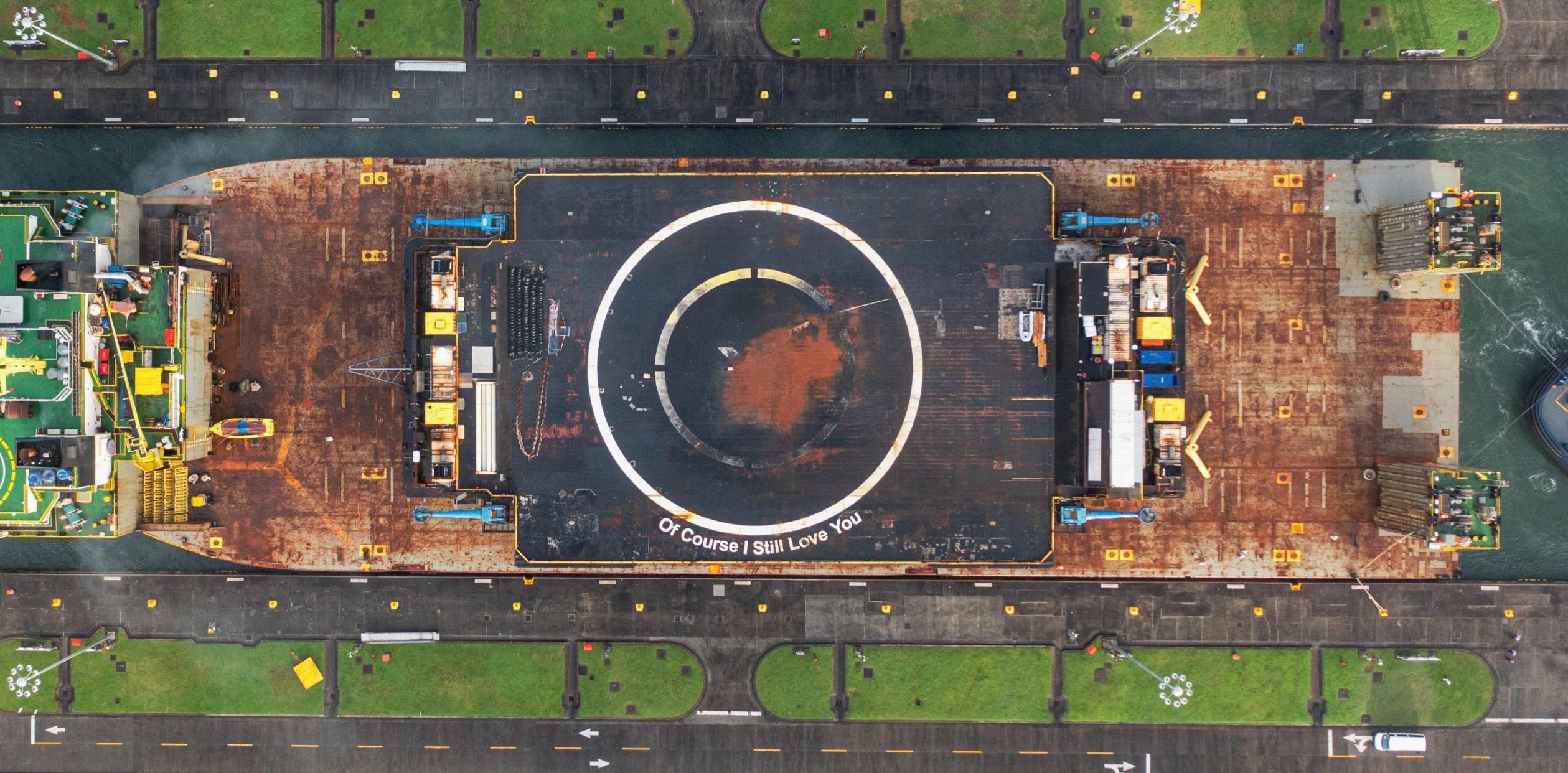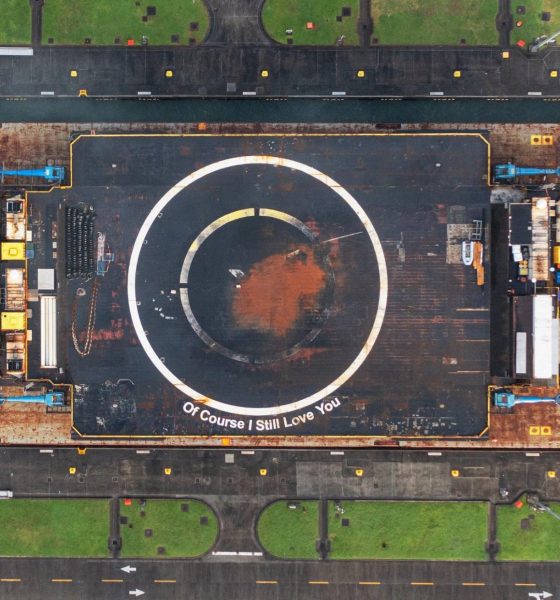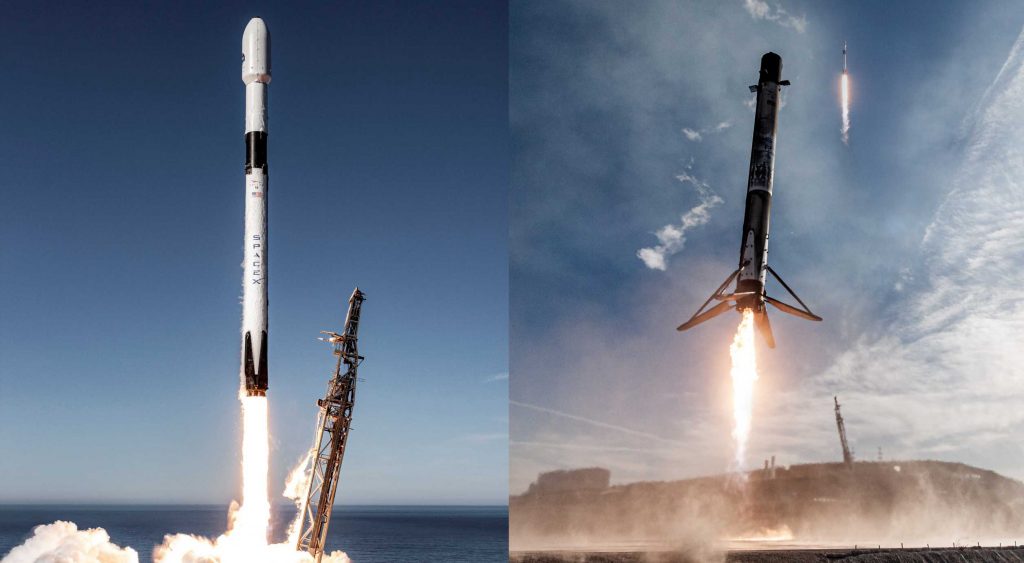

News
SpaceX drone ship completes 5000-mile journey from Florida to California
A bit less than four weeks after departing Central Florida’s Port Canaveral, SpaceX drone ship Of Course I Still Love You (OCISLY) has completed a more than 5000-mile (~8000 km) journey to Port of Long Beach, California.
Around midnight on June 10th, the oldest operational ‘autonomous spaceport drone ship’ (ASDS) was towed out of the closest port to Cape Canaveral, where two SpaceX-leased pads support the vast majority of all Falcon 9 and Falcon Heavy launches. Around 12 months before OCISLY’s departure, drone ship Just Read The Instructions (JRTI) joined it on the East Coast with its first Atlantic Ocean booster recovery some ten months after the opposite journey – California to Florida.
Thanks in no small part to the presence of two operational drone ships stationed in Port Canaveral, SpaceX completed 32 successful East Coast launches and recovered 31 boosters at sea in those 12 months. However, at least as early as April 2021, plans were already in motion to send one of those two drone ships west.
Likely because it’s the most aging member of SpaceX’s booster recovery fleet, drone ship OCISLY was chosen to head to California and support the start of a few dozen dedicated polar Starlink launches. Thanks to limitations with SpaceX’s even older Vandenberg Air/Space Force Base (VAFB) SLC-4E launch facilities, it’s unlikely that the drone ship will ever need support more than one booster recovery per month, compared to two or even three per month operating out of Port Canaveral.

While SpaceX’s East Coast launch operation now has just one drone ship to work with, that might not be the case for long. Late last month, a tugboat frequently used by SpaceX to tow drone ships OCISLY and JRTI departed Port Canaveral and arrived at Port Fourchon, Louisiana on June 27th. Finn Falgout will ultimately tow brand new drone ship A Shortfall of Gravitas (ASOG) – currently in the late stages of assembly at a Fourchon shipyard – to its new home in Port Canaveral, restoring SpaceX’s East Coast booster recovery fleet to two ships.
ASOG’s trip east could happen at any point this month, albeit only after several days to a week of sea trials expected before the shipyard hands off the vessel to SpaceX. At the moment, no East Coast launches of any kind appear to have been scheduled in the first half of July, hinting at unavoidable downtime either for SpaceX alone or the entire Eastern Range. In other words, ASOG could arrive in time to avoid any direct impact on launch cadence that a single drone ship might have.
Still installed on the deck of transport ship Mighty Servant 1 (MS1), OCISLY will likely be offloaded – weather pending – later this week, after which SpaceX will be able to start the process of getting the drone ship ready for its first West Coast rocket recovery mission. That will likely take at least a week or two, potentially leaving OCISLY ready to support SpaceX’s first dedicated polar Starlink launch as early as late July. Simultaneously, it’s not inconceivable that drone ship ASOG will also be ready for its own rocket recovery debut around the same time, meaning that SpaceX could have three operational drone ships for the first time by next month.
Given SpaceX’s plans to quickly ramp up its VAFB facilities to support one launch per month and the impressive success of its East Coast pads in H1 2021, the company could feasibly complete another 21 or 22 launches between August and December.

News
Tesla FSD fleet is nearing 7 billion total miles, including 2.5 billion city miles
As can be seen on Tesla’s official FSD webpage, vehicles equipped with the system have now navigated over 6.99 billion miles.

Tesla’s Full Self-Driving (Supervised) fleet is closing in on almost 7 billion total miles driven, as per data posted by the company on its official FSD webpage.
These figures hint at the massive scale of data fueling Tesla’s rapid FSD improvements, which have been quite notable as of late.
FSD mileage milestones
As can be seen on Tesla’s official FSD webpage, vehicles equipped with the system have now navigated over 6.99 billion miles. Tesla owner and avid FSD tester Whole Mars Catalog also shared a screenshot indicating that from the nearly 7 billion miles traveled by the FSD fleet, more than 2.5 billion miles were driven inside cities.
City miles are particularly valuable for complex urban scenarios like unprotected turns, pedestrian interactions, and traffic lights. This is also the difference-maker for FSD, as only complex solutions, such as Waymo’s self-driving taxis, operate similarly on inner-city streets. And even then, incidents such as the San Francisco blackouts have proven challenging for sensor-rich vehicles like Waymos.
Tesla’s data edge
Tesla has a number of advantages in the autonomous vehicle sector, one of which is the size of its fleet and the number of vehicles training FSD on real-world roads. Tesla’s nearly 7 billion FSD miles then allow the company to roll out updates that make its vehicles behave like they are being driven by experienced drivers, even if they are operating on their own.
So notable are Tesla’s improvements to FSD that NVIDIA Director of Robotics Jim Fan, after experiencing FSD v14, noted that the system is the first AI that passes what he described as a “Physical Turing Test.”
“Despite knowing exactly how robot learning works, I still find it magical watching the steering wheel turn by itself. First it feels surreal, next it becomes routine. Then, like the smartphone, taking it away actively hurts. This is how humanity gets rewired and glued to god-like technologies,” Fan wrote in a post on X.
News
Tesla starts showing how FSD will change lives in Europe
Local officials tested the system on narrow country roads and were impressed by FSD’s smooth, human-like driving, with some calling the service a game-changer for everyday life in areas that are far from urban centers.

Tesla has launched Europe’s first public shuttle service using Full Self-Driving (Supervised) in the rural Eifelkreis Bitburg-Prüm region of Germany, demonstrating how the technology can restore independence and mobility for people who struggle with limited transport options.
Local officials tested the system on narrow country roads and were impressed by FSD’s smooth, human-like driving, with some calling the service a game-changer for everyday life in areas that are far from urban centers.
Officials see real impact on rural residents
Arzfeld Mayor Johannes Kuhl and District Administrator Andreas Kruppert personally tested the Tesla shuttle service. This allowed them to see just how well FSD navigated winding lanes and rural roads confidently. Kruppert said, “Autonomous driving sounds like science fiction to many, but we simply see here that it works totally well in rural regions too.” Kuhl, for his part, also noted that FSD “feels like a very experienced driver.”
The pilot complements the area’s “Citizen Bus” program, which provides on-demand rides for elderly residents who can no longer drive themselves. Tesla Europe shared a video of a demonstration of the service, highlighting how FSD gives people their freedom back, even in places where public transport is not as prevalent.
What the Ministry for Economic Affairs and Transport says
Rhineland-Palatinate’s Minister Daniela Schmitt supported the project, praising the collaboration that made this “first of its kind in Europe” possible. As per the ministry, the rural rollout for the service shows FSD’s potential beyond major cities, and it delivers tangible benefits like grocery runs, doctor visits, and social connections for isolated residents.
“Reliable and flexible mobility is especially vital in rural areas. With the launch of a shuttle service using self-driving vehicles (FSD supervised) by Tesla in the Eifelkreis Bitburg-Prüm, an innovative pilot project is now getting underway that complements local community bus services. It is the first project of its kind in Europe.
“The result is a real gain for rural mobility: greater accessibility, more flexibility and tangible benefits for everyday life. A strong signal for innovation, cooperation and future-oriented mobility beyond urban centers,” the ministry wrote in a LinkedIn post.
News
Tesla China quietly posts Robotaxi-related job listing
Tesla China is currently seeking a Low Voltage Electrical Engineer to work on circuit board design for the company’s autonomous vehicles.

Tesla has posted a new job listing in Shanghai explicitly tied to its Robotaxi program, fueling speculation that the company is preparing to launch its dedicated autonomous ride-hailing service in China.
As noted in the listing, Tesla China is currently seeking a Low Voltage Electrical Engineer to work on circuit board design for the company’s autonomous vehicles.
Robotaxi-specific role
The listing, which was shared on social media platform X by industry watcher @tslaming, suggested that Tesla China is looking to fill the role urgently. The job listing itself specifically mentions that the person hired for the role will be working on the Low Voltage Hardware team, which would design the circuit boards that would serve as the nervous system of the Robotaxi.
Key tasks for the role, as indicated in the job listing, include collaboration with PCB layout, firmware, mechanical, program management, and validation teams, among other responsibilities. The role is based in Shanghai.
China Robotaxi launch
China represents a massive potential market for robotaxis, with its dense urban centers and supportive policies in select cities. Tesla has limited permission to roll out FSD in the country, though despite this, its vehicles have been hailed as among the best in the market when it comes to autonomous features. So far, at least, it appears that China supports Tesla’s FSD and Robotaxi rollout.
This was hinted at in November, when Tesla brought the Cybercab to the 8th China International Import Expo (CIIE) in Shanghai, marking the first time that the autonomous two-seater was brought to the Asia-Pacific region. The vehicle, despite not having a release date in China, received a significant amount of interest among the event’s attendees.








